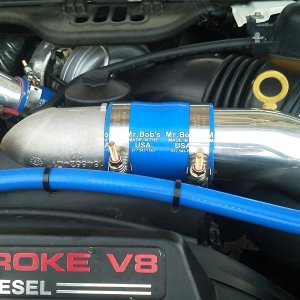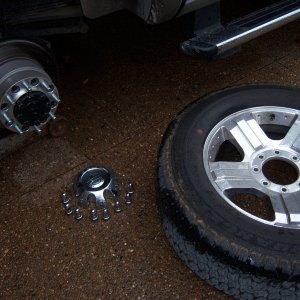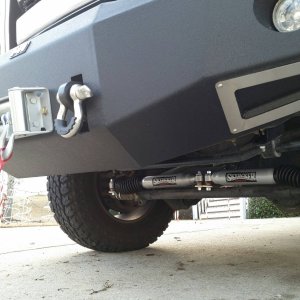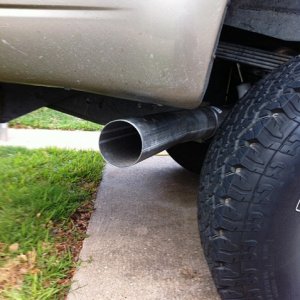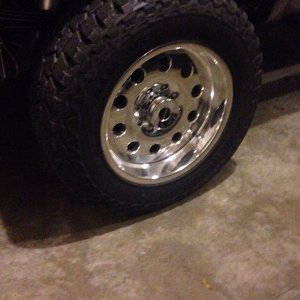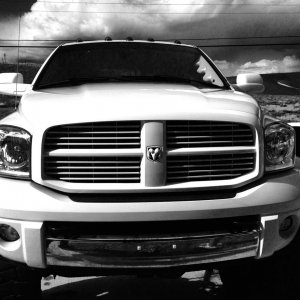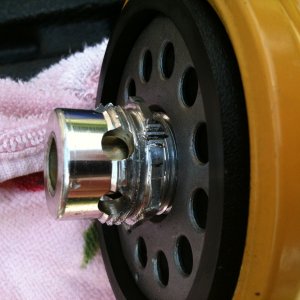I am getting ready to do my bulletproofing. If my head gaskets can be confirmed to be not currently leaking, I will be installing studs one at a time. Right or wrong, this IS what I will be doing and have no interest in debating this. Recently, I noticed my coolant was down about half an inch from the "new full Mark" (the old min. mark). After doing research I rigged up a bubble tester and have bubbles at idle. First question: is some bubbles normal, or is there in fact either a egr or head gasket leak? I will be deleting the egr regardless and don't want to tear thing down twice. Second question: Other than deleting the egr, reassembling and rechecking, How can I determine if my head gaskets are currently leaking? I know I can "get a feel for" it by unhooking the turbo and watching the bubbles, but I would like something a little more conclusive. My understanding is that a leaking egr will also cause a positive in a combustion leak detector, so that rules that out.
You are using an out of date browser. It may not display this or other websites correctly.
You should upgrade or use an alternative browser.
You should upgrade or use an alternative browser.
Test for head gaskets
- Thread starter Twinboys
- Start date
Wayne
Active member
You have to have the egr issue completely fixed before you can do a valid test on the head gaskets. Best way I know of to test head gaskets is to hook a pressure gauge capable of reading 0-30 psi-ish clearly to the cooling system at the top preferably, and go drive it hard. If you can clearly build coolant pressure under heavy load, especially more than the specified cap limit, the gasket(s) are gone. A really bad one will respond similar to a boost gauge, blowing right past the 16 psi threshold. Good gaskets will slowly build system pressure to somewhere around 12 at full temp, and just hang out there.
So, question number two has been definitively answered. Thank you.
I have come to a revelation to question number one. After idling for an hour, all bubbles stopped. What I was observing was probably air escaping due to the expansion of the coolant. So what I read about being at steady state wasn't stated emphatic enough for me to fully comprehend. Not only do you have to be warmed up, you must be at steady state which could only be achieved by prolonged, uninterrupted idling. In my case, about an hour.
No bubbles at steady state should indicate no leak in head gaskets or egr.
My initial low coolant was probably an anomaly from my month old switch to cat-1 elc and filter addition.
I have come to a revelation to question number one. After idling for an hour, all bubbles stopped. What I was observing was probably air escaping due to the expansion of the coolant. So what I read about being at steady state wasn't stated emphatic enough for me to fully comprehend. Not only do you have to be warmed up, you must be at steady state which could only be achieved by prolonged, uninterrupted idling. In my case, about an hour.
No bubbles at steady state should indicate no leak in head gaskets or egr.
My initial low coolant was probably an anomaly from my month old switch to cat-1 elc and filter addition.
Last edited:
swinky
New member
I went by the local fire department and borrowed a 5 gas analyzer. Read like 500ppm of carbon monoxide in a heartbeat..... They were smoked.
Teslawhiskey
New member
- Joined
- May 11, 2015
- Messages
- 4
- Reaction score
- 0
What Wayne said. Before I did studs and gaskets I would have 15psi normally and over 20 when I ran it hard. Now it never goes above 9psi running looney tune.


